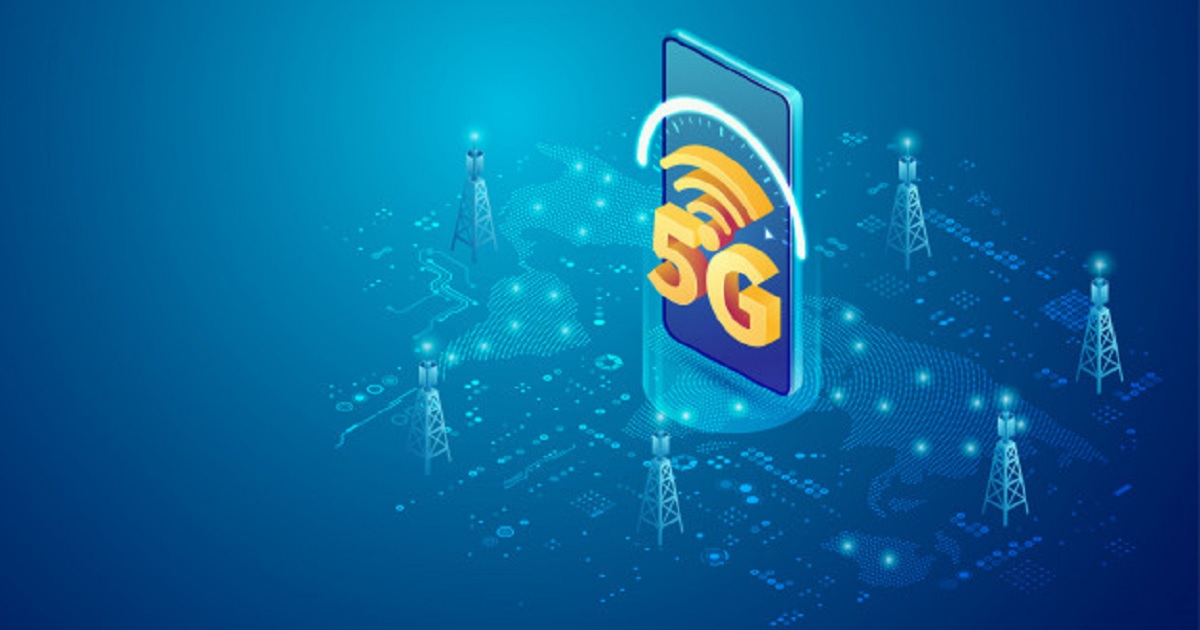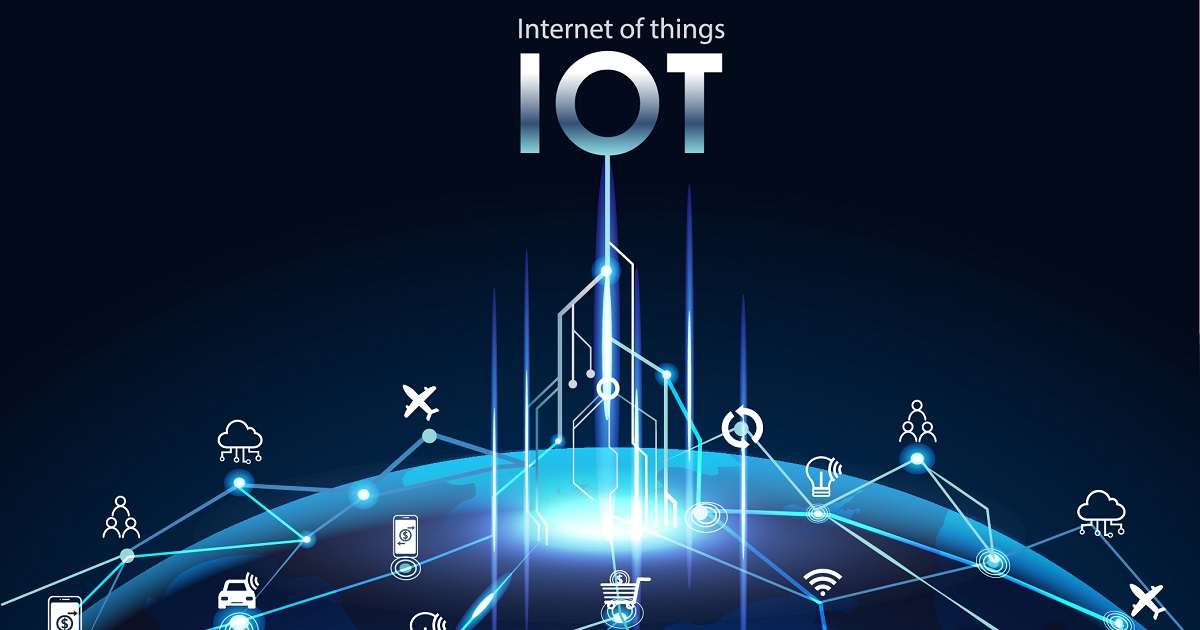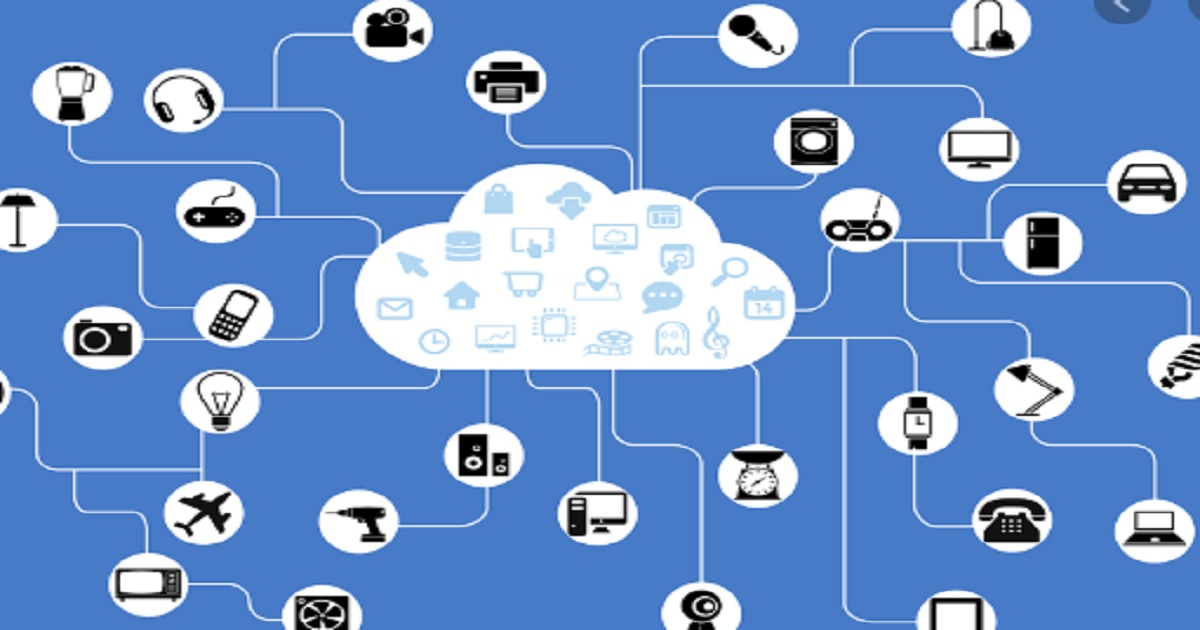
Security, IoT Security
Article | July 13, 2023
The year 2020 was supposed to be a breakthrough year for many technologies but, most businesses have now been forced back into building an infrastructure to transit their workforce to work remotely and ensure continuity of workflow. Nevertheless, an unprecedented set of events have pushed several industries to accelerate the adoption of technologies as they continue to work from home.
5G and Wi-Fi 6 are two tech advancements that have been turning eyes around the world since their introduction. The two wireless technologies are well on their way to revolutionize the Internet of Things as businesses move fast towards digitization and the world is excited.
Table of Contents:
- Wi-Fi 6: A Breakthrough in Wireless Technology
- 5G: For a Better Connected World
- How are Wi-Fi 6 and 5G Transforming the IoT?
- 5G and Wi-Fi 6: Rivals or Allies?
Wi-Fi 6: A Breakthrough in Wireless Technology
The next-generation Wi-Fi with boosted speed was introduced last year to meet the demand for faster internet amongst the rising internet users. But, Wi-Fi 6 is simply more than a tweak in the speed.
Technically called 802.11ax, Wi-Fi 6 is the advancement in the wireless standard doing the same basic things but with greater efficiency in the device-dense areas, and offering much greater bandwidth than its predecessor 802.11ac or Wi-Fi 5. Wi-Fi 6 promises a speed up to 9.6 Gbps up four times than that of Wi-Fi 5 (3.5Gbps). In reality, this is just a theoretical maximum that one is not expected to reach. Even still, the 9.6Gbps is higher speed and doesn’t have to go to a single device but split up across a network of devices.
A new technology in Wi-Fi 6 called the Target Wake Time (TWT) lets routers set check-in times with devices, allowing communications between the router and the devices. The TWT also reduces the time required to keep the antennas powered to search for signals, which in turn also improves battery life.
Wi-Fi 6 also comes with a new security protocol called WPA3, making it difficult to hack the device passwords by simple guesswork.
In short, Wi-Fi 6 means better speeds with optimized battery lives, and improved security.
5G: For a Better Connected World
5G is the next in line to replace 4G LTE. While Wi-Fi covers small scale internet requirements, cellular networks like 5G are here to connect everyone and everything virtually on a larger scale.
The technology is based on the Orthogonal frequency-division Multiplexing (OFDM) that reduces interference by modulating a digital signal across several channels. Ability to operate in both lower bands (like sub-6 GHz) and mmWave (24 GHz and above), 5G promises increased network capacity, low latency and multi-Gbps throughput. 5G also uses the new 5G NR air interface to optimize OFDM to deliver not just better user experience but also a wider one extending to many industries, and mission-critical service areas.
The 5G technology, in a nutshell, has brought with it ultra-high speeds, increased and scalable network capacity, and very low latency.
How are Wi-Fi 6 and 5G Transforming the IoT?
5G and Wi-Fi 6 will fill up the speed gaps that our existing networks are not able to especially, in crowded homes or congested urban areas. It's not just about the speed. The two wireless technologies will increase network capacity and improve signal strengths.
On the business front, 5G and Wi-Fi 6 are both living up to the hype they created since their introduction.
Wi-Fi 6 has emerged, as the enabler of converged IoT at the edge. It has put IT into OT applications, connected devices and processed data from devices such as IP security cameras, LED lighting, and digital signage with touch screen or voice command. Wi-Fi 6 can now be used in office buildings for intelligent building management systems, occupancy sensors, access control (smart locks), smart parking, and fire detection and evacuation.
It’s (Wi-Fi 6) built for IoT. It will connect many, many more people to mobile devices, household appliances, or public utilities, such as the power grid and traffic lights. The transfer rates with Wi-Fi 6 are expected to improve anywhere from four times to 10 times current speeds, with a lower power draw, i.e. while using less electricity.
- Tom Soderstrom, IT Chief Technology and Innovation Officer at NASA’s Jet Propulsion Laboratory (JPL)
Similarly, 5G will open doors for more devices and data. It will increase the adoption of edge computing for faster data processing close to the point of action. The hype around 5G is because of the three key attributes it comes with: enhanced mobile broadband (eMBB), ultra-reliable low-latency (uRLLC), and massive IoT device connectivity (mMTC). But there is the fourth attribute that sets it apart from its predecessor: use of a spectrum that operates at the low-end frequency range (typically 600 MHz). Called as ‘low-band 5G’, it delivers high speeds with signals that go for miles without propagation losses and ability to penetrate obstacles. The 5G operates in the new millimetre-wave bands (24 to 86 GHz) delivering more capacity to enable many low-power IoT connections.
If we were to point down the benefits, these two wireless technologies are bringing to the Internet of Things those would be:
Increased Human-Device Interactions
Increased Data and Devices
More IoT investments
Advancing to the Edge
Acceleration towards Industrial IoT
Enhanced use of IoT devices
Better VUI
5G and Wi-Fi 6: Rivals or Allies?
In February, Cisco estimated that by 2023 M2M communications will contribute to 50% or about 14.7 billion of all networked connections. Cisco’s Annual Internet Report reveals that 5G will enable new IoT applications with greater bandwidth and lower latencies and will accelerate innovations at scale. The same report estimates that 10.6% of global mobile connections in 2023 will be 5G, while Wi-Fi 6 hotspots will be 11.6% of all public Wi-Fi hotspots growing 13 times from 2020 through 2023.
Wi-Fi6 will serve as a necessary complement to 5G. A significant portion of cellular traffic is offloaded to Wi-Fi networks to prevent congestion and degraded performance of cellular networks (due to demand).
- Thomas Barnett, Director of Thought Leadership, Cisco Systems
The two technologies are here to feed different data-hungry areas with gigabit speeds.
With lower deployment costs, Wi-Fi 6 will be dominating the home and business environments where access points need to serve more users covering devices like smartphones, tablets, PCs, printers, TV sets, and streaming devices. With an unlicensed spectrum, the performance of Wi-Fi 6 depends on the number of users, that are using the network at the same time.
5G, with its longer range, will deliver mobile connections and accelerate smart city deployments and manufacturing operations. Like LTE, 5G speeds will depend upon users’ proximity to base stations and the number of people using that network.
The performance of the two depends largely on the area where they are being deployed. For instance, Wi-Fi can very well handle machine-to-machine communications in a managed manufacturing unit, whereas 5G can enhance campus-wide manufacturing operations efficiently. Businesses will have a decision to make which among the two wireless networks fulfils their data appetite.
In conclusion, the two wireless technologies continue to develop in parallel and causing the next big wave in the Internet of Things.
Read More

Industrial IoT, IoT Security
Article | July 12, 2023
Discover the crucial role of big data capabilities in unlocking the potential of IoT for businesses. This article covers their synergy, challenges, and value in decision-making and revenue generation.
Contents
1 Why Big Data and IoT Matter for Businesses
2 Understanding Synergy of Big Data and IoT
2.1 How IoT generates Big Data
2.2 Challenges of Processing Big Data from IoT Devices
2.3 Importance of Big Data in IoT Applications
3 The Value of Big Data and IoT for Businesses
3.1 Improved Decision-making for Businesses
3.2 Generate New Revenue Streams
4 Final Thoughts
1. Why Big Data and IoT Matter for Businesses
The internet of things (IoT) is connecting all types of physical assets to the internet, from smart wearables that track wearer’s vitals to connected industrial units that can report any malfunctions automatically. Big data in IoT is a natural outcome with the growth of IoT devices, with an immense surge in the amount of data being generated.
There are currently over 13 billion connected IoT devices worldwide.
(Source – Techjury)
This data is extremely valuable to businesses as it can help streamline operations, predict trends, and diagnose device issues. Certain functions of IoT devices that are crucial for modern businesses, such as enabling predictive maintenance, depend on the analysis of the data generated every second. However, to maximize the ROI from their IoT ecosystem, businesses must first manage and process the vast amounts of unstructured data they produce. This is where big data capabilities come in.
2. Understanding Synergy of Big Data and IoT
Big data and the IoT are fundamentally different concepts, but are closely connected. Big data is a term that is used for a great amount of data that is characterized by volume, velocity, variety and veracity (or the ‘trustworthiness’ of data). The IoT is a term for physical devices or objects linked to the internet using an assortment of technologies. Understanding the synergy between these two technologies will be critical for businesses looking to leverage their full potential.
2.1 How IoT generates Big Data
IoT is one of the primary drivers of big data growth. The vast number of interconnected devices in the IoT ecosystem generates a massive amount of data every second. This data includes information on user behavior, device performance, and environmental conditions, among others.
The nature of this data makes it challenging to store, process, and analyze using traditional data management tools. This is where big data technologies such as Hadoop, Spark, and NoSQL databases come in, providing the ability to manage massive amounts of data in near-real-time, enabling critical applications of big data in IoT. For businesses, processing IoT data is synonymous with processing big data, due to the nature of the data generated by an IoT ecosystem.
2.2 Challenges of Processing Big Data from IoT Devices
IoT data processing is a complex and challenging task due to several reasons. Firstly, the sheer volume of data generated by these devices is enormous and is only increasing. This requires a robust infrastructure and specialized tools to store, manage, and analyze the data efficiently.
This data is also generally unstructured, heterogeneous, and complex, making it difficult to process using traditional data management and analysis techniques. Moreover, it is often noisy and may contain errors or outliers, which can impact the accuracy of data analysis. Businesses also face a challenge when securing such vast amounts of data. Since IoT devices collect sensitive information such as personal and financial data at scale, it is critical to ensure that data is encrypted, transmitted securely, and stored safely.
Additionally, IoT devices often operate in remote locations with limited connectivity, making it challenging to transmit data to the cloud for storage and analysis. As IoT devices continue to proliferate and generate increasingly large amounts of data, businesses must adopt big data technologies to gain actionable insights from this data.
2.3 Importance of Big Data in IoT Applications
There are several use cases of the IoT where processing large amounts of data is essential. It plays a critical role in IoT applications, providing businesses with valuable insights that can be used to optimize processes, reduce costs, and improve overall efficiency. By collecting and analyzing large amounts of data from IoT devices, businesses can gain a better understanding of customer behavior, machine performance, and other critical metrics.
For example, big data in IoT can be used to identify patterns in customer behavior, allowing businesses to tailor their marketing efforts and improve customer engagement. Additionally, IoT devices can be used to collect data on machine performance, allowing businesses to identify potential problems before they occur, minimize downtime, and optimize maintenance schedules. The value of big data in IoT applications lies in its ability to provide businesses with real-time insights that can be used to drive growth, reduce costs, and improve overall efficiency.
3. The Value of Big Data and IoT for Businesses
Businesses looking to integrate big data in IoT must first consider their data storage and analytics capabilities. By understanding the value of big data technology in capturing and analyzing IoT-generated data, businesses can unlock insights that can help them make better decisions, optimize processes, and create new business opportunities.
3.1 Improved Decision-making for Businesses
IoT and big data technologies offer businesses a wealth of data that can be used to make better-informed decisions. By integrating IoT sensors and devices with their operations, businesses can collect real-time data on customer behavior, operational performance, and market trends. This data can then be analyzed using big data analytics tools to generate valuable insights that can inform decision-making.
For example, operational data can be analyzed to identify inefficiencies and areas for optimization, helping businesses reduce costs and improve efficiency. With the right data storage and analytics capabilities, businesses can leverage the power of IoT and big data to gain a competitive advantage and make better-informed decisions that drive growth and success.
3.2 Generate New Revenue Streams
By leveraging the vast amount of data generated by IoT devices and analyzing it with big data analytics tools, businesses can gain insights into customer behavior, market trends, and operational performance. These insights can be used to create new revenue streams and business models, such as subscription-based services, pay-per-use models, and predictive maintenance services.
For example, IoT sensors can be used to collect data on equipment performance, allowing businesses to offer predictive maintenance services that help prevent equipment breakdowns and reduce downtime. Similarly, customer data can be analyzed to identify new revenue opportunities, such as personalized product recommendations and targeted advertising. With the right strategy and investment in IoT and big data technologies, businesses can unlock new revenue streams and create innovative business models that drive growth and success.
4. Final Thoughts
Big data in IoT is becoming increasingly important for businesses, and the future prospects are bright. As IoT continues to grow and generate more data, businesses that can effectively analyze it will gain a competitive advantage, leading to increased efficiency, reduced costs, and higher ROI. To fully realize the benefits of IoT, businesses must develop big data analytics and IoT devices in tandem, creating a feedback loop that drives continuous improvement and growth. By embracing these technologies, businesses can make data-driven decisions and unlock new insights that will help them thrive in the years ahead.
Read More

IoT Security
Article | June 27, 2023
Learn more about IoT data protocols and what makes them essential for a cohesive IoT ecosystem. This article will provide a detailed view of data protocols and their importance for modern businesses.
1 Significance of IoT Data Protocols for Business Operations
IoT ecosystems form an integral part of many businesses today, and IoT data protocols serve as the foundation for seamless communication and data exchange between connected devices. IoT protocols ensure the integrity and reliability of data, empowering businesses to make informed decisions, optimize operations, enhance productivity, and drive innovation. With standardized and secure IoT protocols and standards, companies can achieve efficient data transmission and allow for scalability across diverse IoT ecosystems. Understanding and leveraging the right protocols is essential for businesses to benefit from the full potential of their IoT investments and gain a competitive edge in today's interconnected world.
2 Understanding IoT Data Protocols
IoT data protocols are standardized rules and formats that ensure efficient and secure data transmission for efficient IoT communication. By adhering to established protocols such as MQTT, CoAP, and AMQP, businesses can maintain interoperability, scalability, and robust data transmission of IoT data, ensuring efficient data storage and management for their IoT ecosystem. This, in turn, empowers organizations to monitor and control critical processes in real-time and make informed decisions.
2.1 Role of IoT Data Protocols in the IoT Ecosystem
The seamless functioning of an organization's IoT ecosystem relies on the pivotal role played by IoT data protocols. These protocols, serving as the communication backbone, enable secure transfer and efficient data processing, thereby facilitating the seamless exchange of information within the IoT network. Consequently, businesses operating within the IoT sphere can harness the power of reliable data communication enabled by these protocols to unlock insights that drive innovation. IoT data protocols serve as the vital link that fuels the interconnected landscape of IoT devices, elevating the efficiency and efficacy of businesses as they navigate the complex web of IoT technologies and leverage its immense potential.
2.2 Overview of Common IoT Data Protocols
The IoT data protocols come with their own set of applications and challenges. Understanding each protocol's individual use cases will help businesses set up and scale their IoT device ecosystems.
MQTT (Message Queuing Telemetry Transport): MQTT is a lightweight and efficient protocol designed for low-power devices and unreliable networks. It uses a publish-subscribe model, making it ideal for IoT applications where bandwidth and power consumption are crucial factors, such as remote monitoring and control systems.
CoAP (Constrained Application Protocol): For resource-constrained IoT devices, CoAP is designed to enable smooth communication over the Internet. It uses a client-server model and is suitable for IoT applications where devices have limited processing power and memory, such as smart home automation, environmental monitoring, and healthcare systems.
HTTP (Hypertext Transfer Protocol): Although primarily designed for web applications, HTTP is also used in IoT systems for data transmission. The ubiquity and familiarity of HTTP make it a widely supported communication protocol. As a result, it is suitable for IoT devices that require high-level interoperability in applications that involve cloud integration, data analytics, and web-based control interfaces.
AMQP (Advanced Message Queuing Protocol): AMQP is a flexible messaging protocol ensuring reliable, secure, and interoperable communication between IoT devices and back-end systems. It supports both publish-subscribe and point-to-point messaging models, making it suitable for IoT scenarios involving complex routing, large-scale deployments, and enterprise integrations.
Zigbee: Zigbee is a wireless protocol designed specifically for low-power, short-range communication in IoT networks. It operates on the IEEE 802.15.4 standard and is known for its energy efficiency and mesh networking capabilities, leading to its widespread adoption in home automation, intelligent lighting, and industrial control systems.
3 Considerations for Choosing the Right IoT Data Protocol
Selecting a suitable IoT data protocol is essential to maintain smooth interoperability and a unified IoT ecosystem. Compatibility with existing infrastructure is crucial for seamless integration and cost-effective implementation. Security measures must also be robust to protect sensitive data from unauthorized access and potential breaches. Additionally, scalable and flexible data protocols in IoT are vital to accommodate future growth and evolving business requirements. Furthermore, the protocol's reliability and efficiency in transmitting data should align with the use case of IoT systems. Finally, considering the protocol's industry adoption and standardization level will also help minimize risks and enhance interoperability.
4 In Summary
IoT data protocols play a significant role in facilitating efficient and secure business operations within the IoT ecosystem. By learning more about the use cases of the most common protocols in the industry, businesses can consider factors such as compatibility, security, scalability, and reliability while choosing the most suitable option for their business. As IoT systems grow, more complex and reliable data protocols will emerge, paving the way for enhanced connectivity, interoperability, and transformative opportunities across various industries.
Read More

Article | April 14, 2020
Organizations around the world are coping with a variety of challenges related to the COVID-19 outbreak. Many companies are struggling to convert their processes from ‘in-office’ to ‘remotely accessible’. And, they’re scrambling to find new ways to “remote” tasks – with “remote” now becoming a verb. For example, we’ve heard from many customers that adding or expanding remote employee access capabilities is a hot topic. One such customer told us that they went from 9% of their workforce working remotely, to 52%. Wow! That’s not only a substantial change to operations and processes – it also directly impacts the company’s security posture. The challenge facing OT security practitioners is daunting. We absolutely must secure the people and systems responsible for saving mankind from an alien super-virus pandemic. But, while the bad guys are lobbing attacks from afar, the good guys are acting behind the scenes like NPCs (non-player characters). They’re bypassing the security systems we developed through years of hard work, like using Gmail or Zoom, or turning off anti-virus, in the name of getting things done.
Read More